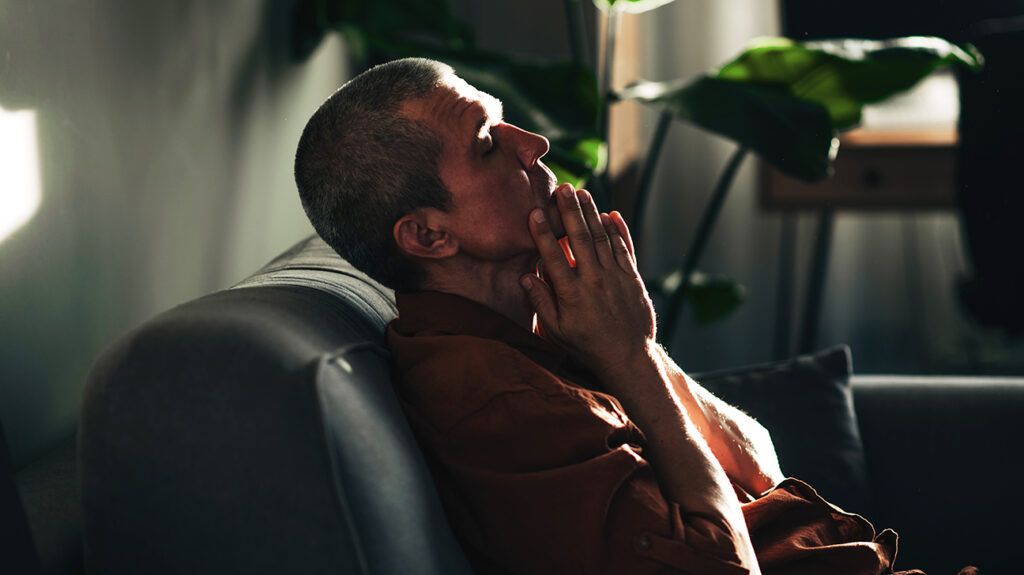Brachytherapy may cause short- or long-term side effects, including urinary, bowel, and sexual problems. Side effects may depend on a person’s age, overall health, and how they respond to treatment.
Brachytherapy is a form of radiation therapy to treat prostate cancer, and it can cause side effects.
This article looks at the potential risks and side effects of brachytherapy, its advantages, and how to find support.

Brachytherapy involves placing radioactive material inside the body to kill cancer cells. To treat prostate cancer, doctors place radioactive material near a prostate tumor, allowing it to kill the cancer cells while harming as little other tissue as possible.
The following sections outline the side effects people may experience.
Brachytherapy may cause problems with urinating. According to the
Brachytherapy may irritate the urethra, the tube urine passes through to leave the body. People may experience changes in urination, such as an increase in frequency.
Symptoms may be most noticeable in the weeks following treatment and usually improve over time.
Other urinary side effects include:
- Urethral stricture: Rarely, a urethral stricture, which is a narrowing of the urethra, may occur. If this happens, people will need treatment with a catheter or surgery to reopen the urethra.
- Radiation cystitis: This is inflammation and scarring of the bladder lining following radiation therapy. It can cause pain or burning during urination and an urge to urinate frequently.
- Hematuria: People may notice blood in the urine following brachytherapy. This happens when radiation damages the tissue and blood vessels of the bladder lining.
Drinking plenty of water may help ease uncomfortable urinary symptoms.
Brachytherapy
Treatments, such as medication and dietary fiber, may help manage radiation proctitis symptoms.
Other bowel side effects with brachytherapy may include:
- rectal pain
- a burning sensation
- diarrhea, sometimes with blood
These symptoms may be short-term, and serious side effects in the long term are
According to the American Brachytherapy Society (ABS), there is some risk that brachytherapy may cause impotence, although this is more likely to affect people over the age of 70.
Erection problems
Treatments, such as medications, vacuum devices, or penile implants, can help manage the sexual side effects of brachytherapy.
According to a 2020 review article, brachytherapy for prostate cancer may potentially affect fertility.
There is little research on the effects of brachytherapy on fertility, but data suggests the testicles absorb a very small amount of radiation from the procedure.
This may cause mild, short-term effects on fertility in the form of low sperm count, reduced sperm motility, and ejaculation problems. People may need to wait 4–12 months after treatment before trying to conceive. Doctors typically recommend banking sperm before treatment for people wishing to preserve their fertility.
The majority of people electing to undergo radiation therapy for prostate cancer are older adults who may not have concerns about the effect on their fertility.
Brachytherapy may cause fatigue, lasting
Fatigue is an extreme lack of energy or tiredness. People may feel weak, listless, exhausted, or drained. Fatigue may make it difficult for people to carry out everyday tasks, such as getting dressed or eating.
Fatigue
Rest, moderate exercise, counseling, and other therapies
According to a 2019 study, brachytherapy may increase the risk of secondary cancers forming. The study included 318,058 people with localized prostate cancer, and 55,566 of those had treatment with brachytherapy.
After 20 years, the occurrence of secondary bladder cancer in people who had brachytherapy was
The 20-year occurrence of secondary rectal cancer was 1.1% with brachytherapy compared to 0.5% with radical prostatectomy.
The study concluded that brachytherapy increases the risk of bladder cancer. It may also increase the risk of rectal cancer. Researchers found that rates of secondary bladder cancer and rectal cancer have recently decreased, though.
Radiation proctitis, which may occur as a complication of brachytherapy, can
People must attend follow-ups after brachytherapy to check for any secondary cancers.
Read more about brachytherapy for prostate cancer.
Advantages of brachytherapy include the following.
- With low dose rate (LDR) brachytherapy, radiation targets a small area, which
reduces damage to surrounding healthy tissue and organs. - Brachytherapy uses higher dose radiation within a smaller area than external beam radiation therapy.
- Lower radiation levels in surrounding areas reduce the risk of developing secondary cancers, particularly for children.
- It is a minimally invasive procedure
compared to surgery. - There is a reduced risk of complications due to surgery.
- There is a shorter recovery time and treatment in the hospital.
- There is a reduced risk of incontinence and impotence compared to radical prostatectomy.
- Most people can return to walking within a few hours and normal activities within a few days after brachytherapy.
People may find support for prostate cancer and treatments from a healthcare team, support groups, organizations, and their friends and family. The following resources may be helpful:
Brachytherapy is a type of internal radiation therapy to treat prostate cancer. Possible side effects may include urinary and bowel problems, fatigue, and sexual problems, such as erectile dysfunction and fertility issues.
Some of these side effects may be short-term, but some may be longer lasting. Brachytherapy may also increase the risk of developing some secondary cancers.
People can discuss the risks and benefits of brachytherapy with a healthcare team and how treatment may affect them in the short and long term.
